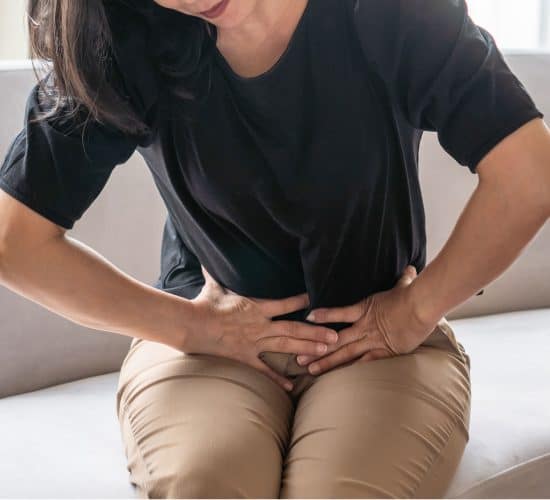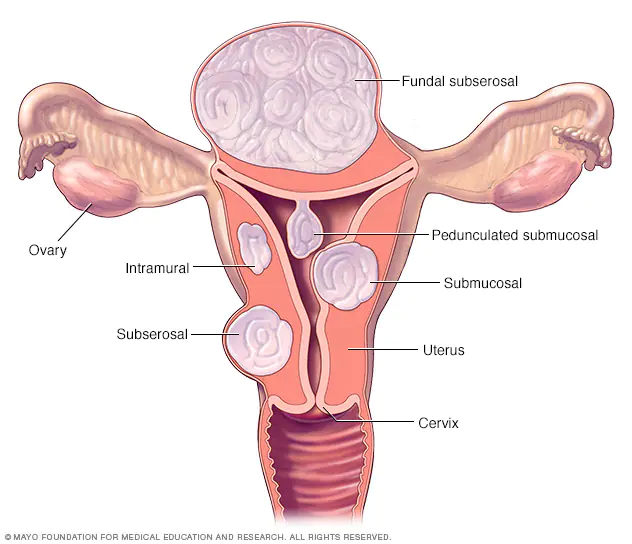
OVERVIEW
Uterine fibroids are common, non-cancerous tumours of the uterus. It is estimated that by the age of 35, up to 40-50% of women have uterine fibroids. There are four basic types of uterine fibroids, classified according to their location in the uterus:
- Subserosal Fibroids: These develop in the outer portion of the uterus and continue to grow outward
- Intramural Fibroids: These are the most common type and develops in the uterine wall and expands.
- Submucosal Fibroids: These are the least common and develop within the uterine cavity, causing excessive and prolonged menstrual bleeding
- Pedunculated fibroids: These grow on stalks or stems. The stems are attached to the uterine wall and can grow either outside the uterus or inside the uterine cavity
SYMPTOMS
In some women, the fibroids can produce mild or no symptoms at all. For others, symptoms of uterine fibroids include:
- Abnormal menstrual cycle (heavy or frequently occurring)
- Painful menstrual periods
- Pain during or after sexual intercourse
- Pressure on the bladder causing frequent urination
- Acute or severe pelvic pain
- Bloating
CAUSES/RISK FACTORS
- Age
- Heredity
- Onset of menstruation at an early age
- Obesity
- Vitamin D deficiency
- Excessive alcohol consumption
- Smoking
- No pregnancy history
DIAGNOSIS
- Ultrasound scan of the uterus
- A CT scan is ordered especially if there are multiple fibroids.
OUR TREATMENTS
Uterine Fibroid Embolisation
- UFE is done via a groin or radial artery access puncture
- A catheter is then guided using fluoroscopy, a type of x-ray technology, to the arteries that supply the uterus and the fibroids specifically
- Small particles or microspheres are then injected into the arteries supplying the fibroids, thus cutting off the blood supply to the fibroids. Post-procedure, these fibroids should start to shrink and reduce in size
You are the right candidate for UFE if you:
- Are a woman who is over 35 years old
- Are not currently pregnant
- Have been diagnosed with uterine fibroids
- Are experiencing symptoms such as excessive heavy bleeding, cramping, pelvic pain, bloating or frequent urination
You are also a candidate if you prefer a non-surgical uterine fibroid treatment option that will preserve your uterus. Make sure to discuss all options with your physician before making a decision.
Some of the benefits of UFE include:
- A minimally invasive procedure that effectively shrinks uterine fibroids
- Requires only local (rather than general) anaesthesia; numbing only one area of the body rather than full sedation
- Does not cause scarring like most other surgical techniques
- While there will be some moderate pain after a UFE procedure, it is typically less than post-surgical pain
- A good option if you would like to preserve your uterus as compared to a hysterectomy
- 85-90% of women experience significant relief of their symptoms
- Faster recovery time compared to traditional surgery
- Same day procedure typically with no overnight stay
- Reduced risk of infection as compared to conventional open surgery
Click here to download our Uterine Fibroids brochure
References:
Uterine fibroids. (2021, September 16). Retrieved January 25, 2022, from https://www.mayoclinic.org/diseases-conditions/uterine-fibroids/symptoms-causes/syc-20354288

